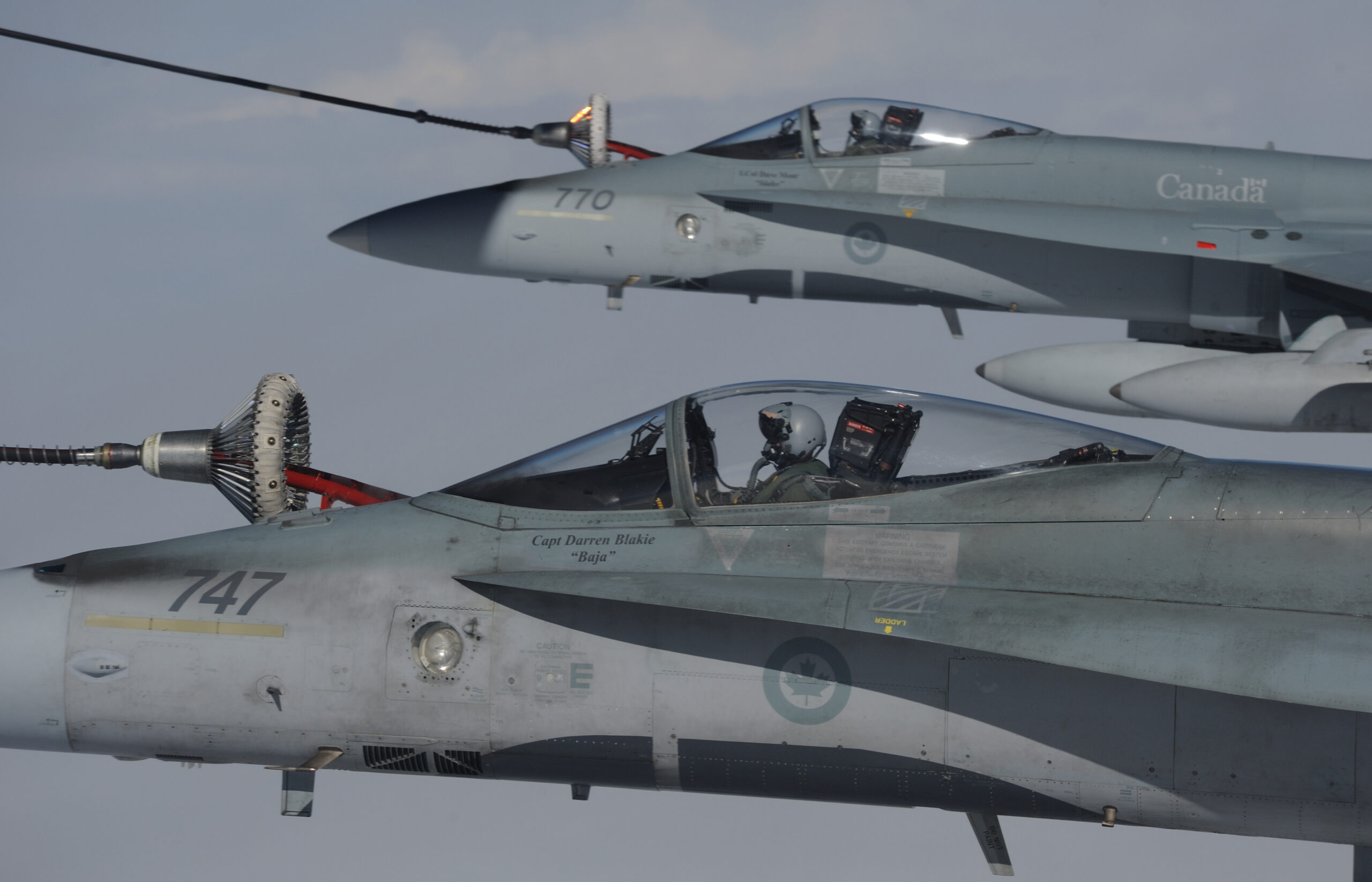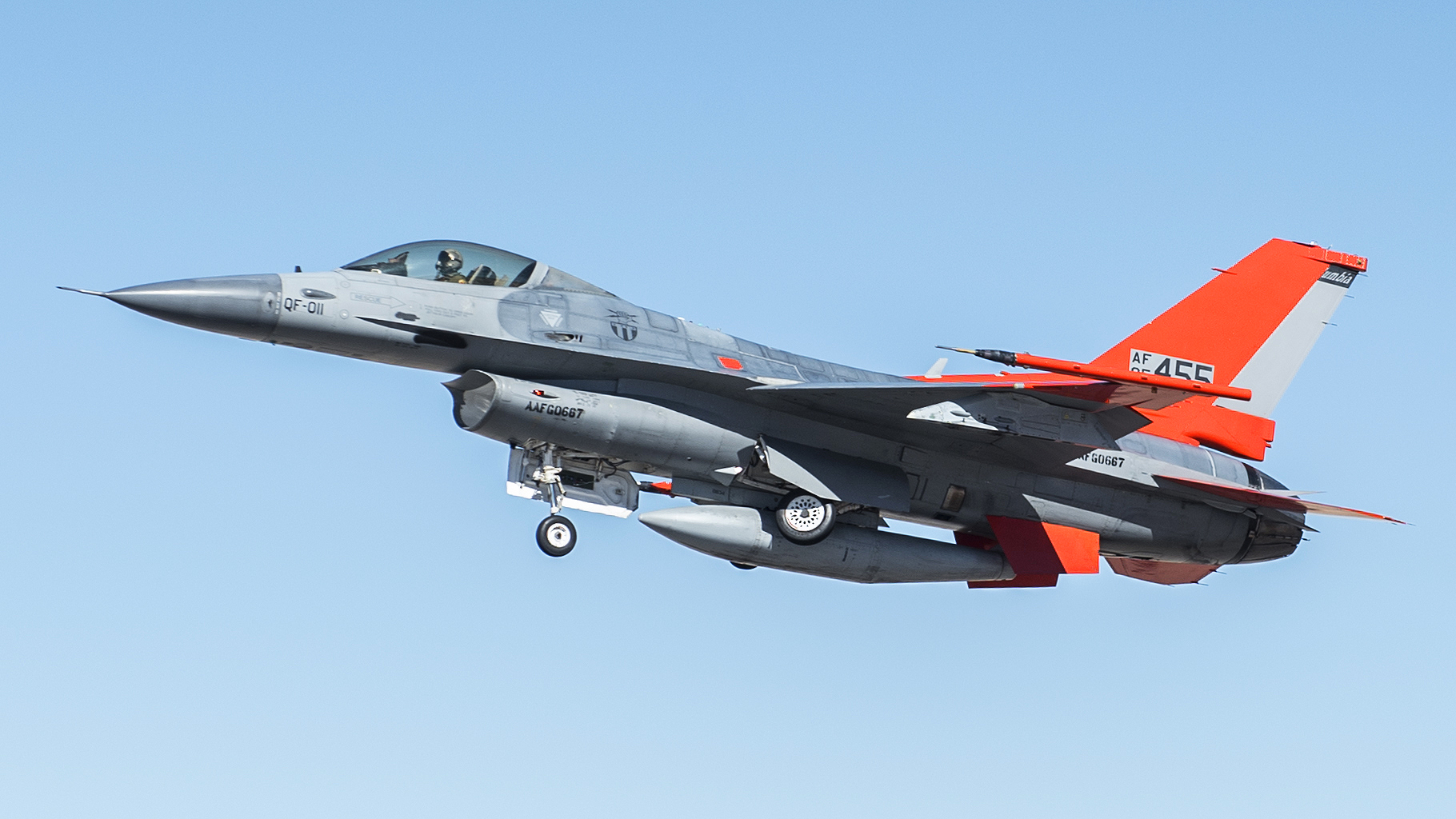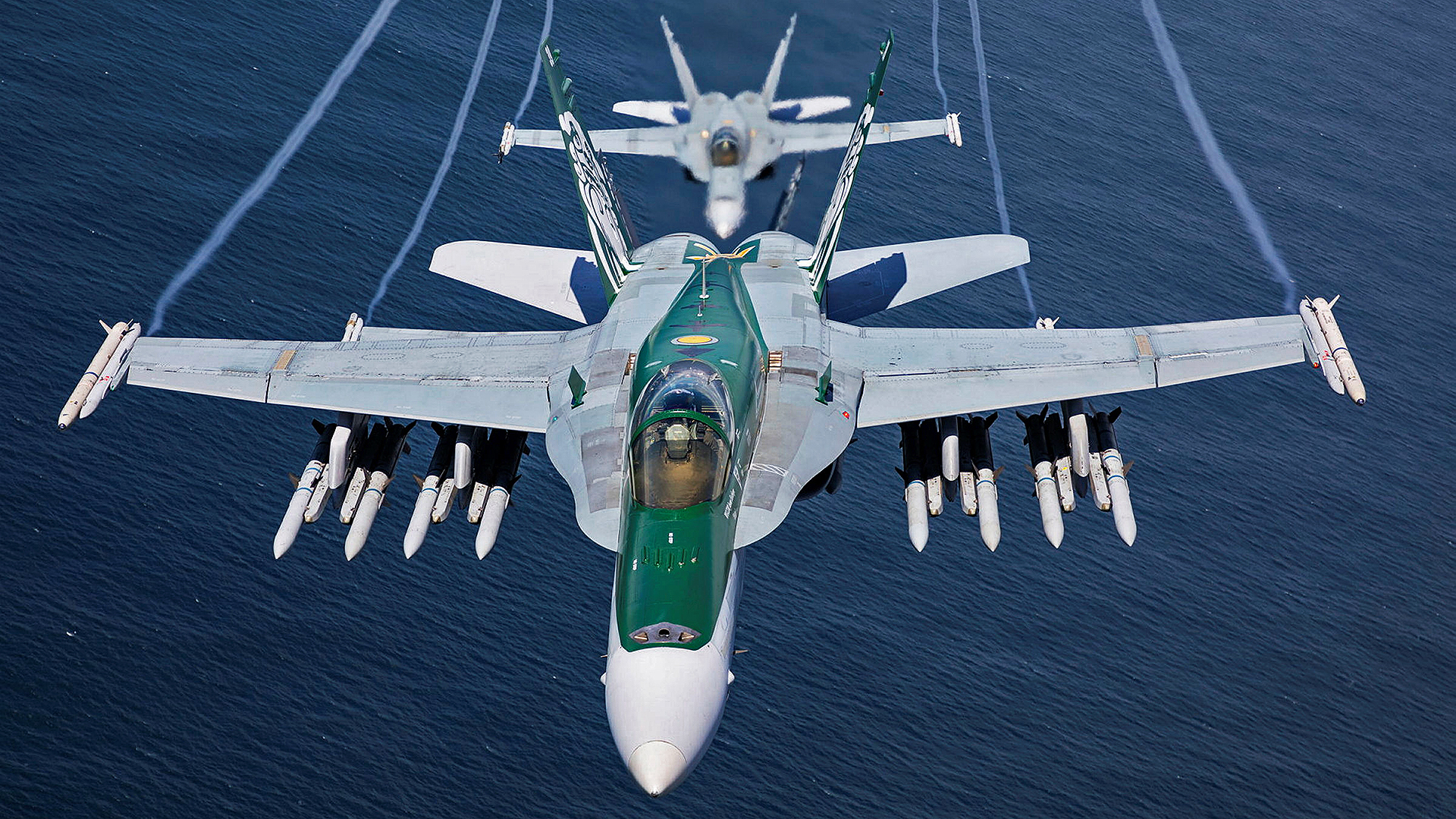Nearly two and a half years ago, we reported on an American adversary air services provider, Air USA, that was set to acquire the vast majority of the Royal Australian Air Force’s deeply upgraded F/A-18A/B Hornet fleet. Fast forward to today and Air USA has a new name, RAVN Aerospace, but no ex-RAAF Hornets.
Considering what is happening in Ukraine, and the country’s extreme need for Western fourth-generation fighter capabilities, having dozens of upgraded F/A-18s in good condition just languishing in storage seems like a remarkable missed opportunity. With this in mind we set out to get to the bottom of the status of the Hornets and what could be possible not just in terms of providing fighters for Kyiv’s cause but also rapidly training pilots and ground crews to support that cause.

The original plan was for Air USA to acquire 46 Hornets. Canada had bought 25 prior to the deal with Air USA to help bolster its aging CF-18 fleet. The Australian Hornets are largely upgraded to an A++ standard, which gives them the capabilities of newer F/A-18Cs, including the type’s upgraded AN/APG-73 radar.
In addition, these Hornets have never been battered around on an aircraft carrier or exposed to constant salt water during deployment. So we are talking about nearly four dozen highly relevant and well-cared-for fighters here. This is pretty much the size of Ukraine’s MiG-29 fleet, prior to recent transfers from NATO supporters, the type serving as the backbone of its current fighter force.

When it comes to the Australian Department of Defense, which publicized the deal with Air USA when it was struck, you’d think an inquiry as to the status of their surplus Hornets and the deal to export them to the United States would be a simple ask. That has not been the case. Repeated attempts to get them to comment on any of this have gone unanswered. It is totally unclear why this is the case. There is hardly anything secret about retired Hornets sitting in storage.
As for the State Department, which would be critical for allowing the re-import or re-export of the Hornets, all a spokesperson could say was, “as a matter of policy, we are unable to comment on or confirm specific potential defense trade licensing activity.” So no luck there.
RAVN Aerospace also declined to provide official comment on the situation with the Hornets at this time.

In the meantime, we have even heard rumors that if the Hornets do not get exported, they could be destroyed. This is hardly out of character for the RAAF, which famously buried its F-111 “Pig” swing-wing combat jet fleet after retirement. Doing so to the Hornets would be a shame, bordering on outrageous, considering there is a country very much in need of fourth-generation fighters.
There has also been some talk that Finland’s relatively pristine F/A-18C/Ds could be provided to Ukraine. This makes little sense at this time as the country will be converting over to the F-35A starting in 2026. This was further swatted down by officials recently under that same logic — they need their Hornets now more than ever. But Finland’s Hornets could be ideal candidates to bolster Ukraine’s fleet of ex-RAAF Hornets towards the latter half of the decade, as the country transitions to the F-35A. That process should be complete by around 2030. Finland has roughly 62 F/A-18C/Ds.

Spain is also drawing down its EF-18 Hornet fleet and looks to unload it entirely by the end of the decade. The Hornet is also in the twilight of its service life with Switzerland, where 25 of the type will serve into the early 2030s when they will be replaced more than in full by the F-35A.
Canada will be operating its upgraded and expanded CF-18 fleet until the F-35 arrives in full, but now there is a clearer timeline on when that will actually happen. The F-35 transition will begin in the second half of this decade. Once it is complete, nearly 100 F/A-18 airframes will become surplus.
So hundreds of CF-18s will eventually be offered for transfer or spare parts by the end of the decade.

There are also 40 Kuwaiti F/A-18C/Ds, some of the best-condition Hornets around, that are still up for grabs. Malaysia, which operates the F/A-18D and will continue to do so well into the 2030s, has had an interest in them, as have the U.S. Marine Corps. And that brings us to the latter. Nearly 100 F/A-18C/Ds will serve the USMC at least until the end of the decade in a highly upgraded form. Support and training within the NAVAIR ecosystem are still going strong and hundreds of Legacy Hornets have recently been retired from the U.S. Navy and USMC, leaving a large inventory of parts.
The point of all this is that while the F-16 gets discussed almost solely as the right fighter for Ukraine based on support and airframe availability, it is hardly the only option and second-hand F-16s are a far hotter commodity than most think. Not just foreign air arms, but the Pentagon itself is using retired F-16s, with the Navy equipping its preeminent aggressor squadron with retired USAF Vipers, for instance. Many others have gone to the QF-16 Full-Scale Aerial Target (FSAT) program. There is also major demand for them via private adversary support contractors. This is in addition to increasing demand overall for F-16s around the globe.

Yes, the F-16 has the most impressive training and support infrastructure, but the F/A-18 still has that infrastructure, as well, and will be flooded with spare parts as more Hornets retire. More on that in a moment.
In terms of capabilities and performance, the F/A-18 is arguably better suited for Ukraine than the F-16. As a twin-engine design that excels at slow-speed handling, it is more in line with Ukraine’s MiG-29 and Su-27 fleets. Its very robust carrier-capable landing gear is also better suited for Ukraine’s Soviet-era airfield infrastructure and potential for distributed and austere operations, which Ukraine has been executing to make targeting harder for Russian forces. Like the F-16, it can carry pretty much anything that would be available to Ukraine now and in the future and can be quickly adapted to handle new capabilities if need be.

While upgraded with advanced targeting pods, Joint Helmet Mounted Cueing Systems (JHMCS), and many other enhancements, the ex-RAAF jets are not cutting edge and would present reduced technological risk in their current form. This makes them deliverable with minimal modifications.
The Hornet does not need to be the final fighter answer for Ukraine, either. Maybe F-16s will one day come, but the Hornet is available right now and fits well with their existing fighter mindset. It has the potential to get Ukraine into the 4th generation Western fighter game as soon as possible.
When you factor all this in, Australia’s unwanted Hornets present an incredible opportunity. One that is literally just sitting there for the taking. But what about training? Who could get aviators and maintainers up to snuff and how fast could they do it?

One option would be to look to the Marine Corps for this training. While the pipeline is limited, it could potentially be expanded to accommodate an influx of pilots for conversion training. The War Zone has reached out to the Navy with detailed inquiries as to the capacity of its Legacy Hornet pipeline and how it could be expanded. We have yet to get a response.
Setting up a foreign training program for Ukraine with other countries that operate the Hornet could be another option, but this would have to be established quickly.
But one could argue no matter what type Ukraine gets, existing governmental training pipelines are not well set up for getting aircrews into combat as fast as possible. And by any account, this takes time to achieve. Here is where the private sector could come in.

Decades of knowledge have been gained by instructor pilots and maintainers on how to teach flying and supporting these aircraft. The Hornet was the mainstay of the Navy and Marines for many years, as well as a fixture in aforementioned foreign air arms. Private contractors could step in to rapidly train Ukrainians on the Hornet outside of, or in conjunction with, the far more rigid existing government-ran pipelines.
Under such an arrangement, the syllabus could be totally tailored to Ukraine’s needs and focus on converting as many pilots as possible as fast as possible based on their own individual needs, as well. Also, the mission sets they would need to perform would be more limited, at least to start, which could accelerate training.

Without all the red tape of a government-run training enterprise, pilots and ground crew could be generated quicker and some could argue, at least under these unique circumstances, better. Even a situation where government training handles some aspects of the syllabus and contractors take care of others could be a workable solution under these incredibly tight time constraints.
We reached out to RAVN Aerospace and Top Aces, both established contractor adversary support providers to the Department of Defense, about the possibility of leveraging private training. Neither would provide comment due to the sensitivities of the subject at this time.

Now the question of RAVN Aerospace giving up the Hornets would be a whole other issue, but they could still possibly help with training and equipping the Ukrainian Air Force with the aircraft. The State Department and the Australian Government would likely have the final say here regardless.
So, taking all this in mind, the fighter solution Ukraine needs right now is sitting in storage in Australia. These aircraft are urgently needed. They should be donated to Ukraine immediately and the quickest possible training transition program should be established to get these jets on Ukraine’s ramps with crews ready to employ and maintain them as fast as possible.
Contact the author: tyler@thedrive.com
